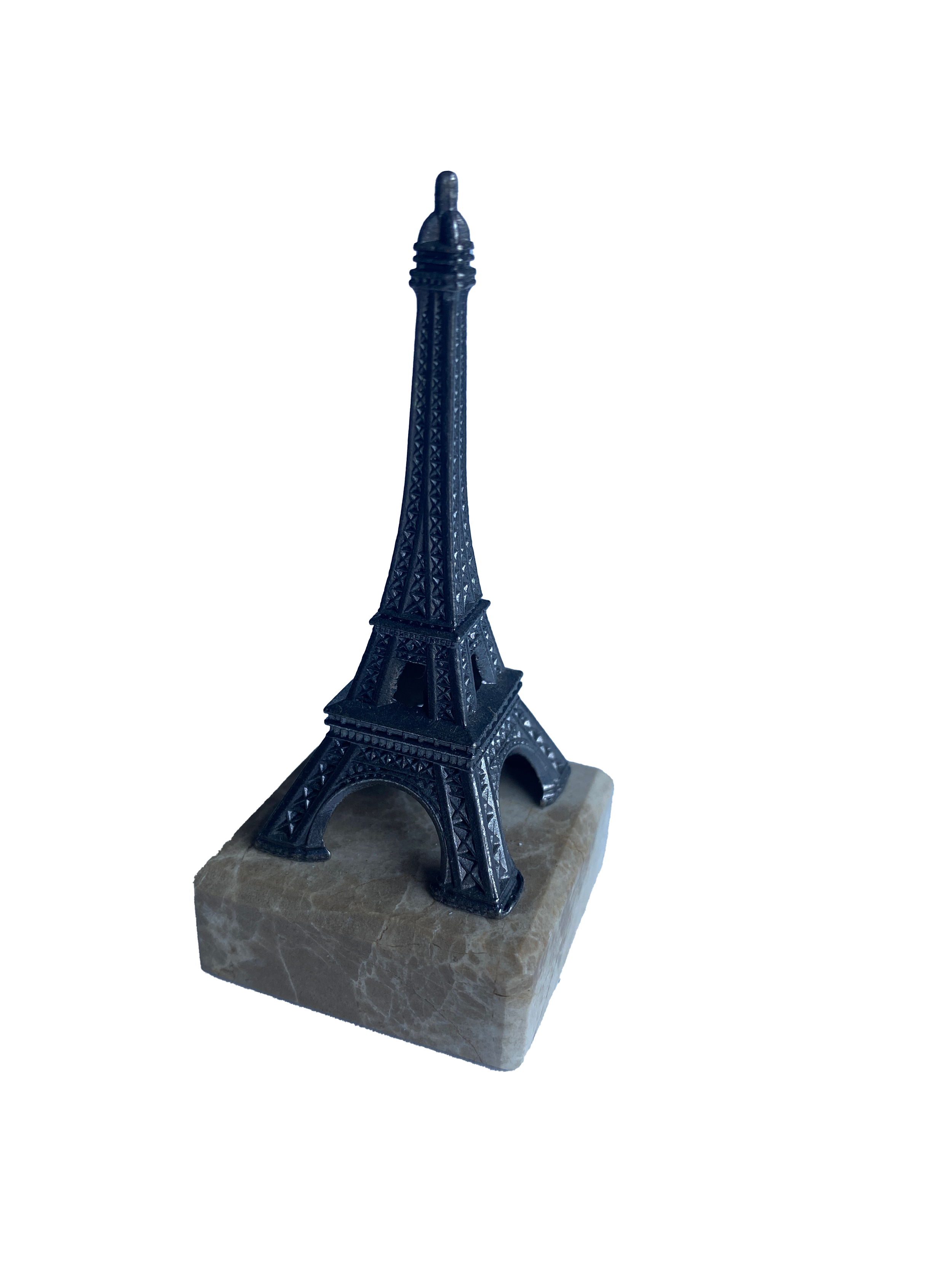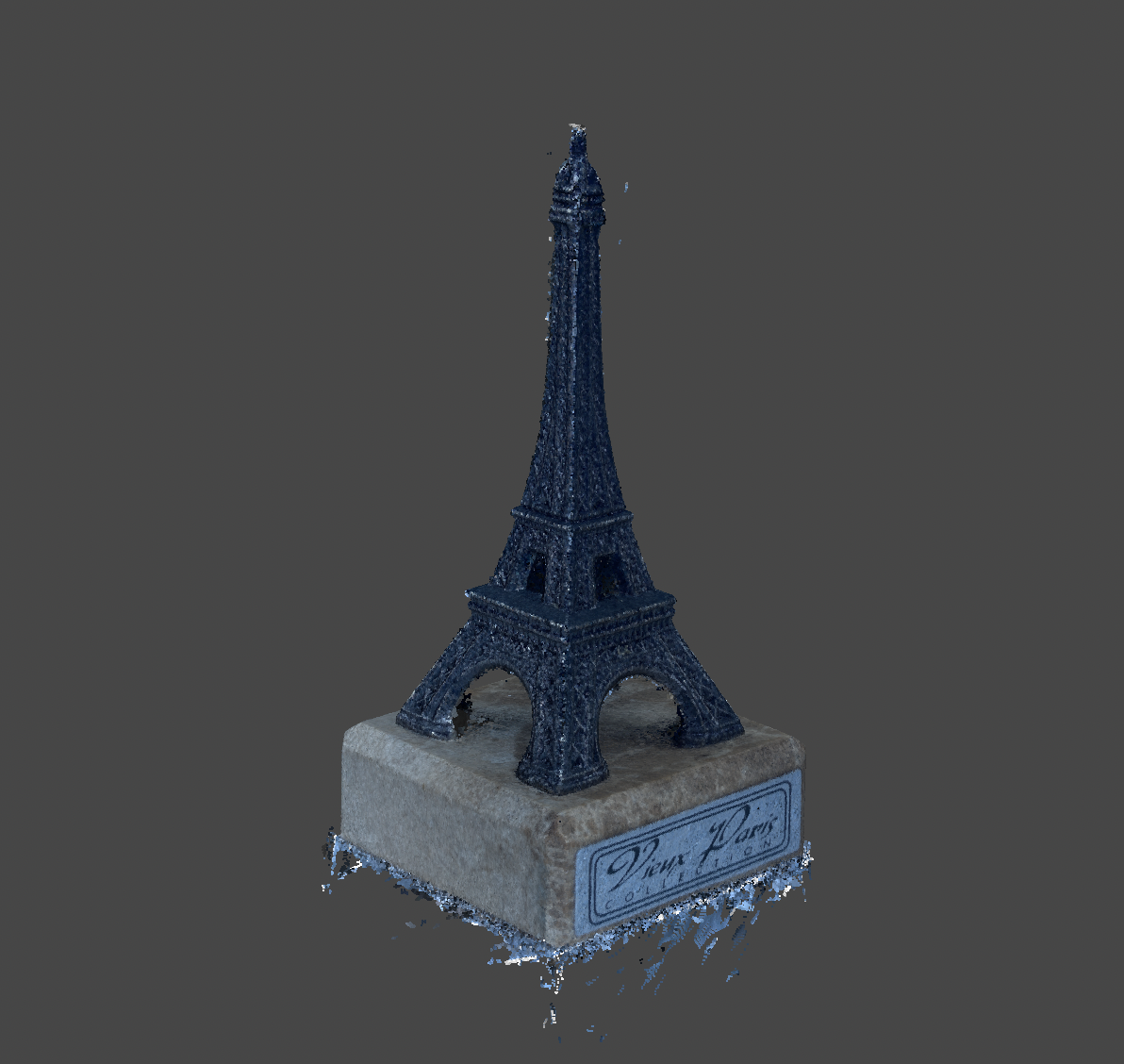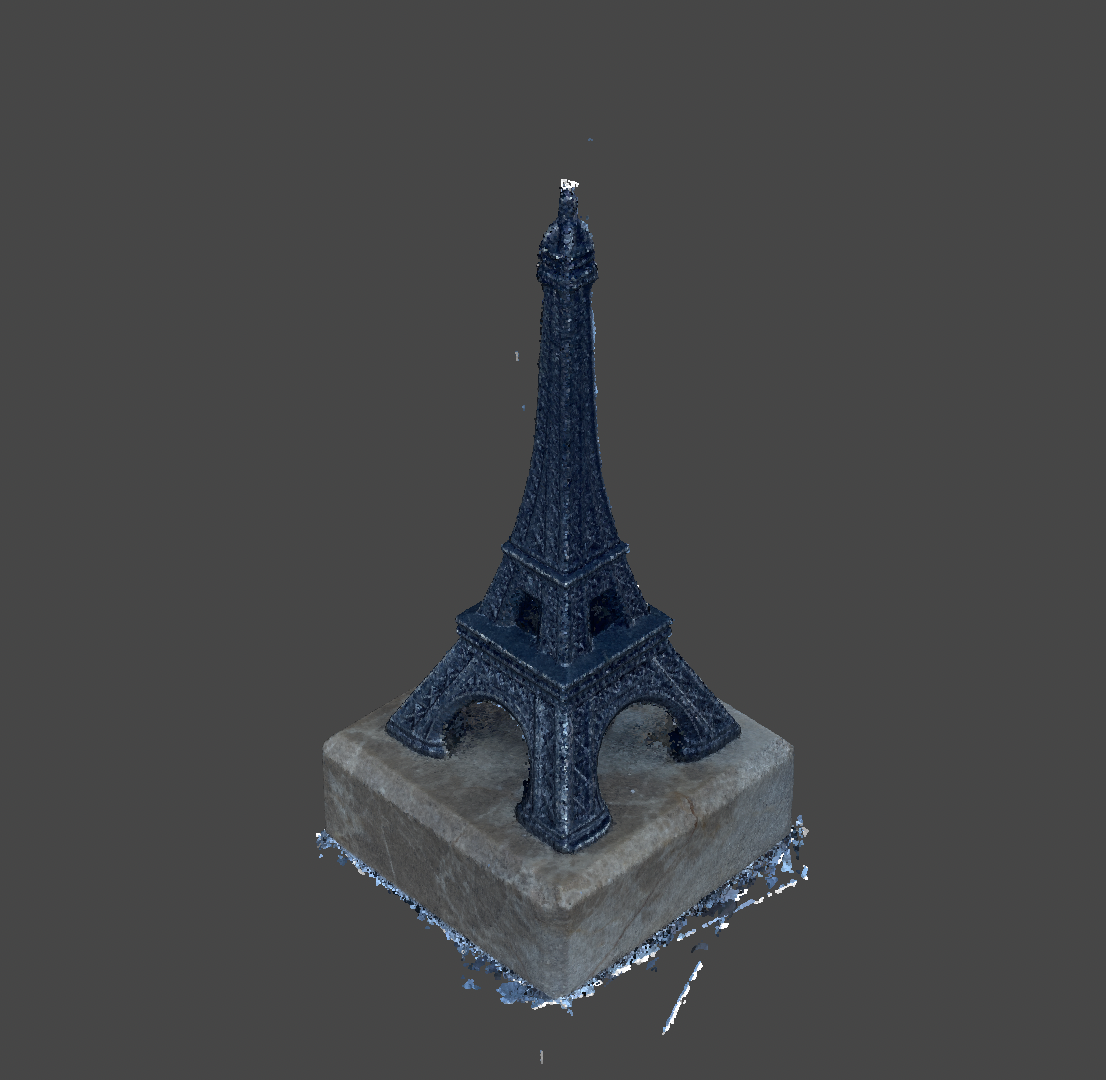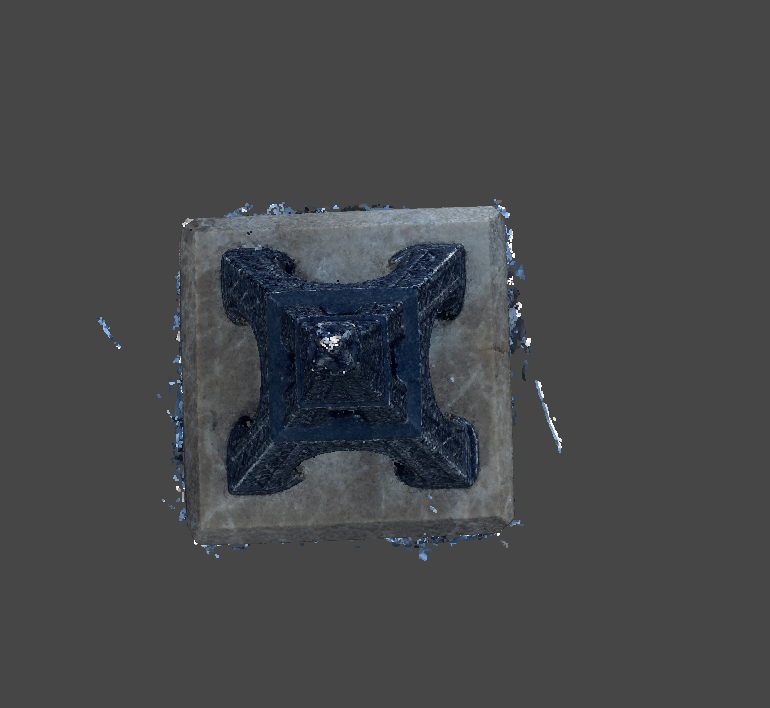Conceptual Introduction to Digital Arts and Humanities
A REFLECTIVE PORTFOLIO
Topics
-
To begin the exploration of this module, I would like to start off with two quotes I find interesting in relation to Digital Humanities and Reimagining Scholarship.
“Digital Humanities is a comprehensive activist project that uses technology to respond to the interconnected cultural and structural problems of academe” (Pannapacker 2011).
“Like the founders and builders of museums, libraries, concert halls, and critical editions in the last century, digital humanists are creating the new infrastructure of our history and culture and changing the nature of education and scholarship.” (Pannapacker 2011).
-
One purpose of digital cultures is to bring new life to old literature, artefacts, and tools for humanity. It can be taken to greater heights than simply sharing an image of an artefact. You can advance that and deepen that, by doing an immersive experience for the world. You can take the data and make a 3D model or create an interactive webpage, allowing you to breathe new life into it. Audio and video add dynamic and immersive elements to information. AR, VR, and XR are innovative avenues to create effective and engaging learning experiences as well.
The world of knowledge and experience will grow so much faster when we build experiences that multiple people contribute to and learn from. Craft an inclusive learning experience for the world. Capitalise on collaboration. Think about how you ingest information. It is not just through books. The stone tablets we once learned from are now made out of glass and plastic. We must not let our information and the way we share it remain stagnant. The digital humanities are about acknowledging the movement of the world and adapting new and old information to be shared with generations forever.
Nicholas Carr in ‘The Shallows: What the Internet is Doing to Our Brain,’ said that “Web reading has enormously increased the scope of information available, from global politics to scholarly debates” (Carr 2010). “He worries, however, that hyperreading leads to changes in brain function that make sustained concentration more difficult, leaving us in a constant state of distraction in which no problem can be explored for very long before our need for continuous stimulation kicks in and we check e-mail, scan blogs, message someone, or check our RSS feeds” (Hayles, 2010). We live in a very distracted world. That is why it is vital to understand what you are trying to communicate to the world and do so in the most effective manner.
-
My initial thoughts on Marc C. Marino’s article is to focus more on the goal of blogs rather than blogging itself. I do not think blogging is as popular as it was at one time. However, the general idea is very much alive. Blogs were created simply to share information. We live in a very demanding world where many people do not have long attention spans and seek to be entertained all the time. There are many people that would rather watch a short video explaining something rather than read a blog post saying the very same thing. Creators and educators have seen and adapted to the way the world is moving. Now people are getting their information through YouTube when they are learning about something, or possibly a podcast on their long commute. There is an abundance of information in the world and people that once shared it on a blog might be sharing it through these platforms that have gained huge popularity.
I do not think that blogs are obsolete or dying off. I do think that blogs compete with other sources like Facebook, Instagram, and YouTube that are trying to achieve the same goal. As individuals who are studying Digital Humanities, we must be anticipating these changes and adapt to them quickly. It would be exhausting trying to constantly stay “relevant,” but it is important to think about what you want to share with the world and think about where your desired audience is getting their information from. There are always going to be new ways to share information with the world. Blogging might not have the influence it once did, but people still seek out information and you must research the best way to share your passions and knowledge with the world.
I do feel as if blogs hold a more professional and academic standpoint of collaboration than Instagram or Facebook for instance. I like the idea of students and professionals collaborating on written work to learn and expand ideas (Marino 2019). However, this is not limited to writing but could be utilised through videos or podcasts as well. My final notes on Marino’s work are that I believe blogs still have importance and can be utilised well for sharing and collaborating on work. As a digital creator, I believe it is best to evaluate what information you are trying to share or collaborate on, and research which platform and approach is best for you.
-
In my response to Wired’s ‘A Domain of One’s Own,’ I first want to say that I like the idea of students creating a digital presence for themselves that will continue after their graduation. As a graphic designer, it is clear to me why I would need and utilise a digital presence for myself. All jobs that I will apply for will require a link to my personal website. Potential employers want to see that I can curate a digital presence for myself along with a digital portfolio of my previous work. However, I also see the benefits of a digital presence for other careers. A blog is a great way to share information and experiences you have learned from with the world. It is also great for networking. You never know who will stumble across your website and read an article you wrote about something you are passionate about. That could open the door to your dream job.
The collaborative aspect of the UMW cloud platform is interesting to me (Insider 2015). While my undergraduate university, like most, used a cloud-based platform for things like email, we did not have a space to share student work. I think this would have been a great idea to implement as students could learn from one another, broaden our interests, and learn from different points of views. All sources of my written work were only seen by the eyes of the professor it was assigned by. This could change and ideas could be further developed by future students.
-
In my response to The Internet’s Own Boy, Aaron’s life was significant but cut far too short. It is inspiring to see the efforts of someone that had full intentions of making the world a better place and did not care about the millions (maybe billions) of dollars he could make from his innovations. While I understand some of Aaron’s choices were not completely ethical by the U.S. government’s standards, I do not think he should have been used as a ploy to scare hackers from doing worse (Youtube 2014). I believe that the bystander effect came into play during the time of Aaron’s prosecution. I do not think enough people with strong influence, like Aaron, spoke up on his behalf, maybe because they thought someone else would. It was amazing but heartbreaking to see the outpour of emotion from people that looked up to Aaron after his passing. He was 26 years old and had made a huge impact and advancement for the internet. It makes me wonder what else Aaron might have accomplished in his lifetime had it gone on.
I believe this was a reflection of a desire for power and control by the government. Aaron had the knowledge and abilities to inflict significant damage, but he didn’t. He used his skills to make information more accessible to people. The government saw Aaron’s capabilities but did not investigate his true intentions. While I see it to be extremely beneficial for knowledge to be shared with the world, I believe the open access of data should remain in the control of the owner. I am able to see the frustrations of both sides of this story.
-
Looking at the 5-Star Open Data deployment scheme, it is apparent that the more information and context you can give with data, the better (Berners-Lee 2015). The data you share should be a launching point for the reader. It should be interwoven with more research, supporting articles, projects, and publishings.
As I looked through the Open Data sites for Ireland and the United States I found them to be simple and easy to navigate. However, when I viewed the website for CKAN, I was pleasantly surprised to see real numbers and statistics about what CKAN was accomplishing. CKAN powers over 30 major government sites, 100% open source codebase hosted on Github, and there are over 15 million datasets. The goal of CKAN is to make data “accessible and usable.” They are able to “streamline publishing, sharing, finding and using data” (CKAN 2022). CKAN has done a fantastic job of simplifying the process for Open Data by creating customisable editing to your data sharing to share your data exactly how you want. They have also integrated over 230 extensions to help manage your datasets.
-
The key ideas for this study on representing GLAM, are digitisation, digitalisation, and digital transformation. Digitisation can be described as transforming data from the analog to digital state. Examples could include images such as jpegs as well as photogrammetry. Digitalisation is used to assist a process and help provide people access to primary sources for their research, curiosity, and cultural reasons. Digital transformation is used to describe the results of digitisation and digitalisation (Murphy 2020).
It’s not only important to share your work and data, but that you do so in a mindful way where it will actually be found and utilised. Metadata is going to help the future understand the data we have now. Sharing data in 2022 should be an immersive experience to truly capture the essence of the data. As we visited the Nano Nagle Place for this module, I was reminded of the experience of being immersed in history. There is a significant difference between reading about history and standing within its walls. Now, anyone can be a curator. Whether that is for a physical museum or for a digital database, anyone can have the capability to preserve our world today and what once was. The stories of the past, and of today, can be attached with a true immersive experience through technology.
-
For the module on Data Capture, Customisation, and Optimisation, I created my 3D model with the Agisoft Metashape program for Mac. I took the images with my iPhone and placed the small figurine on a white swooped background to make it easier for the computer to detect the subject. I used a little over 50 images for this model and took images from “eye level” and then from both higher and lower angles. Once I understood what I needed to do in the software to get the model right I thoroughly enjoyed the process. Please see images in the “appendix” section of this page.
After watching the videos and thinking of each method, I am greatly interested in continuing to try out photogrammetry along with 3D space capture in the future. As a graphic designer, I can see the potential for these two methods in future work. The 3D space capture is especially fascinating to me in helping with larger space design (Claremont 2021). Having the capabilities of 3D space capture would be a great integration for the website of an architect or interior designer that depends on visual and spatial interactions between their structures and their client. I also think the Terrestrial 3D Laser Scanning (TLS) is extremely useful (PMCVideoes 2020). Going along with the video of the monument that was scanned for preservation, I think every artefact in museums and cultural centres would benefit from this process (Virtuality Tech 2018). People that may not ever have a chance to see these historical artefacts in person could gain a better understanding of the pieces instead of 2D images and descriptions.
-
Continuing on the topic of 3D documentation and digital modelling, I continue to think of how it can create an immersive experience for people. With the use of 3D documentation, VR, and AR, the possibilities are extraordinary on what you can achieve. The use of these tools can provide an interactive experience for people to learn about the world and cultures, how the world used to be, and where the world might go.
In the summer of 2021, the Choctaw Nation of Oklahoma opened up its state of the art Cultural Center. It is 24,500 square feet and full of immerse learning opportunities. These interactive installations walk you through the story of the Choctaw people from before their time at ‘Moundville,’ through the Trail of Tears, all the way to present day. There are many multimedia experiences that share the story of the Choctaw people through projection mapping, 3D Scanning, 3D modelling, AR, animation, and intricate theatre design. They worked in conjunction with Monadnock to create this masterpiece (Monadnock 2021). The Headquarters of the Choctaw Nation of Oklahoma, along with the Cultural Center, are located in my hometown of Durant, Oklahoma in the United States.
-
The use of metadata is crucial for the sharing and organising of information. Essentially, metadata is explained by Dublin Core as “data about data” (DCMI 2018). It is extremely helpful in organising data for users to find by giving the computer more insight and information as to what the data actually is. There are many resources that help with the creation and support of metadata. The metadata should be constructed with the user in mind but written for the computer to understand. When crafting the metadata for your data, ask what questions might lead a user to find your information. Metadata should be used to give more information about practically anything that can be identified. Dublin Core metadata is a well known style for use in correlation with Semantic Web or Linked Data principles (DCMI 2018).
Paradata is how the data is actually processed and understood. The paradata should go more in depth on how the data was created and how it is processed, rather than what it is (Tanner 2022). Both metadata and paradata are essential to the process of storing and sharing data in a way that is effective for the computer to process and for the user to find.
-
When reading the article ‘AI-Generated Art Won a Prize. Artists Aren’t Happy.’ by The New York Times, I had mixed feelings about the story. While I see the anger of artists about a computer generated piece of art winning, I also have to admire the advancements of technology and the beautiful artwork that can be produced. The artist, Jason Allen, did not break any rules however as he perfectly disclosed the details of his artwork and entered it into the “digital art/digitally manipulated photography” category of the competition (Roose 2022). While I do agree that AI can generate beautiful imagery, I can also agree with the argument that it might not be considered traditional art. I believe it is still art, but not in the traditional sense like many people would think of.
Visualisation and representation through any non-traditional format is going to attract interest from most people. It is about taking what we have and finding the best possible way to share it with the world. AI, 3D scanning and modelling, VR, AR, and the next advancements to come are all expanding the possibilities we have with sharing knowledge. These technologies are changing the way that we look at the world and learn about the world. We need to use these tools to continue learning and challenging the limits on how we can share and display information in the digital humanities.
Appendix
-
As I examine the entirety of this course, I have gained many tools and schools of thought that will further engage me in the digital humanities. This course has given me a new perspective on digital cultures and what that has looked like historically and where it is today. The course Conceptual Introduction to Digital Arts and Humanities, has directed me to identify the main questions and concerns with identity and subjectivity in digital culture. I have been exposed to new technologies and how they can be utilised for the expansion of the digital humanities. There are many aspects that comprise the digital arts and humanities. They all lead you to the central idea that it is not only important that we continue to share and publish knowledge but there is immense purpose within the medium that we use. We must evaluate the best way to share information, possibly through a video, a 3D model, or an interactive image. Then you must also assess the shareability and how this piece of knowledge can be passed on. We must also ask ourselves “Can the world interact with this digital artefact? Or can it simply be viewed?” This can be solved simply by adding a place for viewers to comment and share ideas related to this information. More people will be able to find your shared artefacts and interact with them through the use of metadata. The world of digital humanities is constantly evolving and there is always something to be learned. I am pleased with the knowledge that I have gained from this module that I will be able to apply to my career as a brand designer and contributor to the digital humanities.
-
Agisoft . (2022). Discover intelligent photogrammetry with metashape. Agisoft Metashape: Agisoft Metashape. Retrieved 2022, from https://www.agisoft.com/
Berners-Lee, T. (2015, August 31). Star Open Data. 5. Retrieved 2022, from https://5stardata.info/en/
Carr, Nicholas. The Shallows: What the Internet Is Doing to Our Brains. New York: Norton, 2010. Print.
CKAN. (2022). CKAN for government. ckan.org. Retrieved 2022, from https://ckan.org/government
Claremont, B. (Director). (2021, September 29). Matterport vs. Matterport Alternatives: ULTIMATE COMPARISON - YouTube [Video file]. Retrieved Autumn, 2022, from https://www.youtube.com/watch?v=Tfh1MkwajYE
DCMI. Metadata basics. (2018, December 15). Retrieved 2022, from https://www.dublincore.org/resources/metadata-basics/
Hayles, Katherine. (2010). How We Read: Close, Hyper, Machine. ADE Bulletin. 150. 62-79. 10.1632/ade.150.62.
Insider, W. I. R. E. D. (2015, August 7). A domain of one's own. Wired. Retrieved 2022, from https://www.wired.com/insights/2012/07/a-domain-of-ones-own/
Marino, M. C. (2019, August 23). Teaching writing in the post-blogging era. Medium. Retrieved 2022, from https://markcmarino.medium.com/teaching-writing-in-the-post-blogging-era-ab7848247e33
Monadnock. (2021.). Choctaw Cultural Center. Monadnock. Retrieved 2022, from https://monadnock.org/project/choctaw-cultural-center
Murphy, O. (2020, November). Glam Presentation. Lecture on GLAM (Galleries, Libraries, Archives and Museums).
Pannapacker, William. 9/23/2011. Big-Tent Digital Humanities: a View From the Edge, Part 2. Chronicle of Higher Education, Vol. 58 Issue 5, pA32-A32
PMCvideos (Director). (2020). How Does a Laser Scanner Work? [Video file]. Retrieved Autumn, 2022, from https://www.youtube.com/watch?v=daJlEr09350
Roose, K. (2022, September 2). Ai-generated art won a prize. artists aren’t happy. - The New York Times. The New York Times. Retrieved 2022, from https://www.nytimes.com/2022/09/02/technology/ai-artificial-intelligence-artists.html
Tanner, P. (2022). Metadata: What is it and why do we need it? Lecture, University College Cork; University College Cork.
Virtuality Tech (Director). (2018, November 20). What is Photogrammetry? [Video file]. Retrieved Autumn, 2022, from https://www.youtube.com/watch?v=fY4AK6D2sl4&t=4s
YouTube. (2014). The Internet's Own Boy. YouTube. Retrieved 2022, from https://www.youtube.com/watch?v=9vz06QO3UkQ.

png image of figurine

png image of figurine

png image of figurine

3D rendering of the figurine

3D rendering of the figurine

3D rendering of the figurine
-
This work is licensed under a Creative Commons Attribution-NonCommercial-NoDerivatives 4.0 International License.
